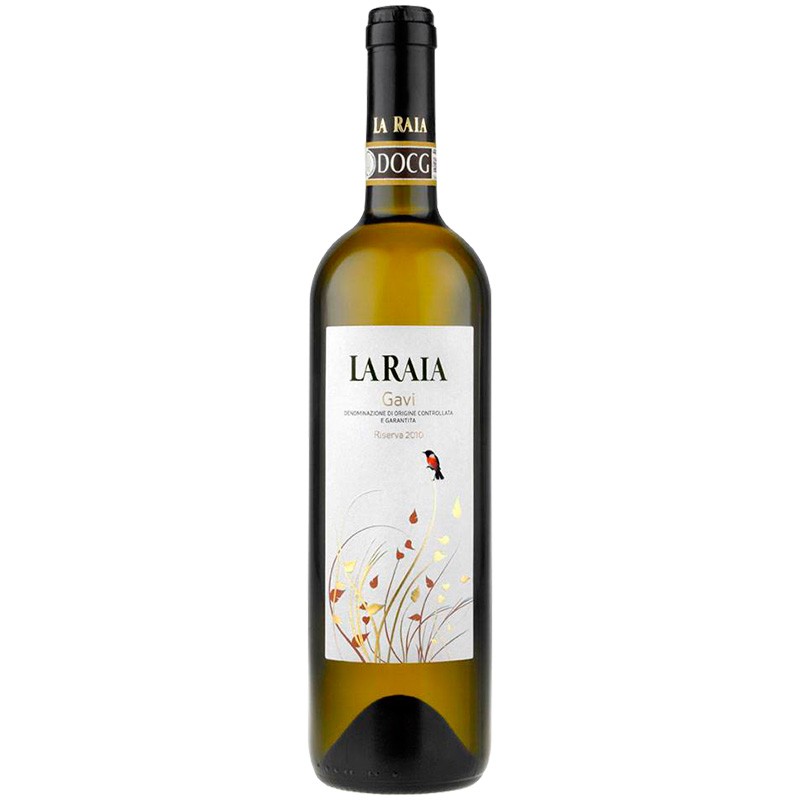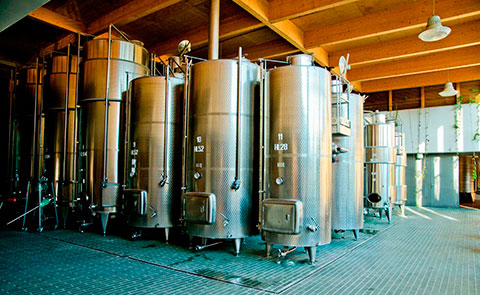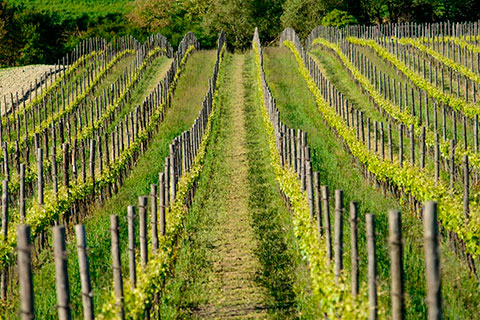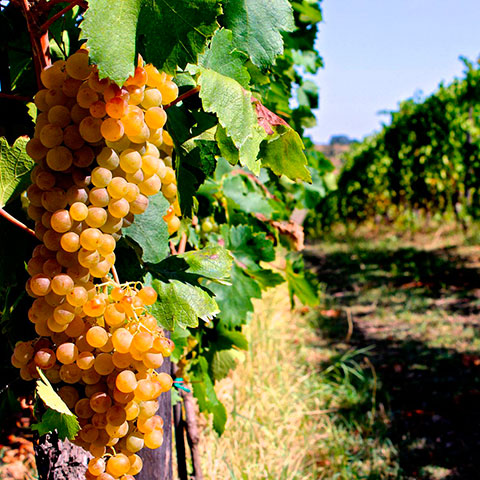



White wine with straw yellow color, more or less intense.
The aroma it’s fine and delicate, with floral hints typical of the Gavi area.
In the palate it’s a white wine rich, dry, harmonic, and pleasant to the palate, savoury, with a persistent warm finish.
Excellent with seafood, above all with shellfish of which it brings out the particular taste, and with light first courses and risotto. It is the perfect match also for fresh or semi-soft cheese.
We recommend that you enjoy this wine at one temperature between 10° and 12° C.
ALCOHOL CONTENT: 13%

Delivery: 2 to 6 weeks

Delivers all over the world by truck, air and sea. In LCL or full container.

Shelf Life / Products Validity: We always deliver with the maximum validity.
It embodies the terroir’s tradition. Grapes are handpicked slightly ripe, with a golden yellow coloring. A complex aroma of ripe fruit, honey and candied fruit characterizes the wine obtained.
The vineyard is situated on a south-east facing hill covered by 60-year-old vines. The calcareous, clayish and marly soil is particularly suitable for Cortese vine farming. As for all of our vineyards, we avoid any kind of fertilizer and chemical products. The soil is planted with green manure - made up of broad beans, peas and clover - which, once trimmed, transforms into fertilizer and humus.
Cortese grapes for the production of Gavi Riserva benefit of great thermic ventilation and an ideal microclimate, thanks to their natural exposure. Yield does not go over 65 quintals per hectare. During the maturation phase grapes are selected in the vineyard, allowing obtaining a naturally awesome alcoholic content.
Grapes are harvested and handpicked at the end of September.
After the selection, grapes are destemmed and delicately pressed. The must obtained is then decanted without adding any oenological additives at a low temperature.
Alcoholic fermentation takes place in small stainless steel tanks at a controlled temperature.
Approximately 25 days later, at the end of the fermentation, the wine is poured into another stainless steel tank, and there it remains for 6 months, as required by the production regulations.
The Gavi docg Riserva is then bottled and continues refining for another six months in the bottle, before being exposed to the market. This refinement procedure results into a long-lived and pleasant to drink wine.

COLOUR: straw yellow, more or less intense.
AROMA: fine and delicate, with floral hints typical of the Gavi area.
MOUTH FEEL: rich, dry, harmonic, and pleasant to the palate, savoury, with a persistent warm finish.
ALCOHOL CONTENT: 13%
Excellent with seafood, above all with shellfish of which it brings out the par- ticular taste, and with light first courses and risotto. It is the perfect match also for fresh or semi-soft cheese.
Best served: Between 10° and 12° C.
Bottles should be stored in a cool dry place, and in the dark, at 12°/15° C.

At our farm we follow the biodynamic approach, not only dispensing with fertilizers, pesticides and herbicides, but also using the soil and its vital resources in a careful and responsible way.
The traditional agriculture uses fertilizers, instead: plants are nourished with soluble food which roots absorb passively, thus vines lose their identity and the relationship with the soil therefore uniform all flavours and characteristics of their fruits. Biodynamic treatments are a way of harmonizing the farm and the universe’s creative rhythm.

At our vineyard we use two spray preparations, the horn manure and the horn silica, which influence the dynamics of the vegetal growth, improving the quality of our grapes and crops. Both preparations are mixed up in water for one hour just before use.
The blending starts by spinning in one direction, creating a deep whirlpool in the barriques. The direction is then changed and blending continues until a new whirlpool is created. Mixing up small doses of material in large quantities of water is called “dynamization”.
Biodynamic farm with Demeter certified since 2007. It is one of the 47 wine certified companies in Italy.
For over half a century the international Demeter trademark has been granting the correct implementation of the biodynamic principles to cultivations and food productions all over the world. Controls on the conformity to such principles and to the provided procedures are constant.
In particular, as far as wine is concerned, Demeter certification attests not only the quality of grapes, but also of all the processes of winemaking and of the winery itself. The commitment to the respect for nature goes thus throughout the entire productive process, to deliver to consumers a biodynamic wine, peculiar expression of the terroir and exclusive product of nature’s will.
Winery distinguishes for its exclusive biodynamic piedmont wine production which highly respects the international certification criteria.

Cortese is a white grape variety that is most famous for its role in the crisp, lime-scented wines of Gavi. The variety is known for its bracingly high acidity and its ability to retain freshness, even when grown in hot environments. Apple, peach and honeydew flavors are commonly associated with Cortese wine, with lime, almond and light herbal or grassy aromas.
The variety has been grown in the southeastern part of Piedmont for hundreds of years, and is mentioned in documents that date back to the beginning of the 17th Century. It has long been considered as Piedmont's finest white variety and is often credited as introducing the world to Italian white wine. Nowadays, however, it has been usurped somewhat by Arneis and Moscato d'Asti.
Cortese must be watched carefully in the vineyard to ensure success: it is a vigorous, productive vine and if yields are not kept in check then the wines can be bland and lacking in character. Ripeness is another key issue – while it does well in Gavi's warm environs, it can struggle to ripen fully in other parts of Piedmont. This leads to wines with almost unmanageably high acidity, which is why Cortese is used more often as a minor blending grape outside of its home town.
Some producers use malolactic fermentation to mitigate the variety's high acidity, but it is usually produced in a crisp, dry style. High acidity can be useful to growers as well – Cortese is sometimes used to make sparkling wines.

Data sheet